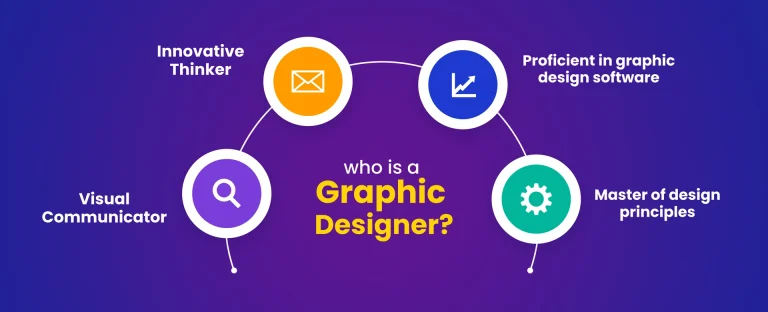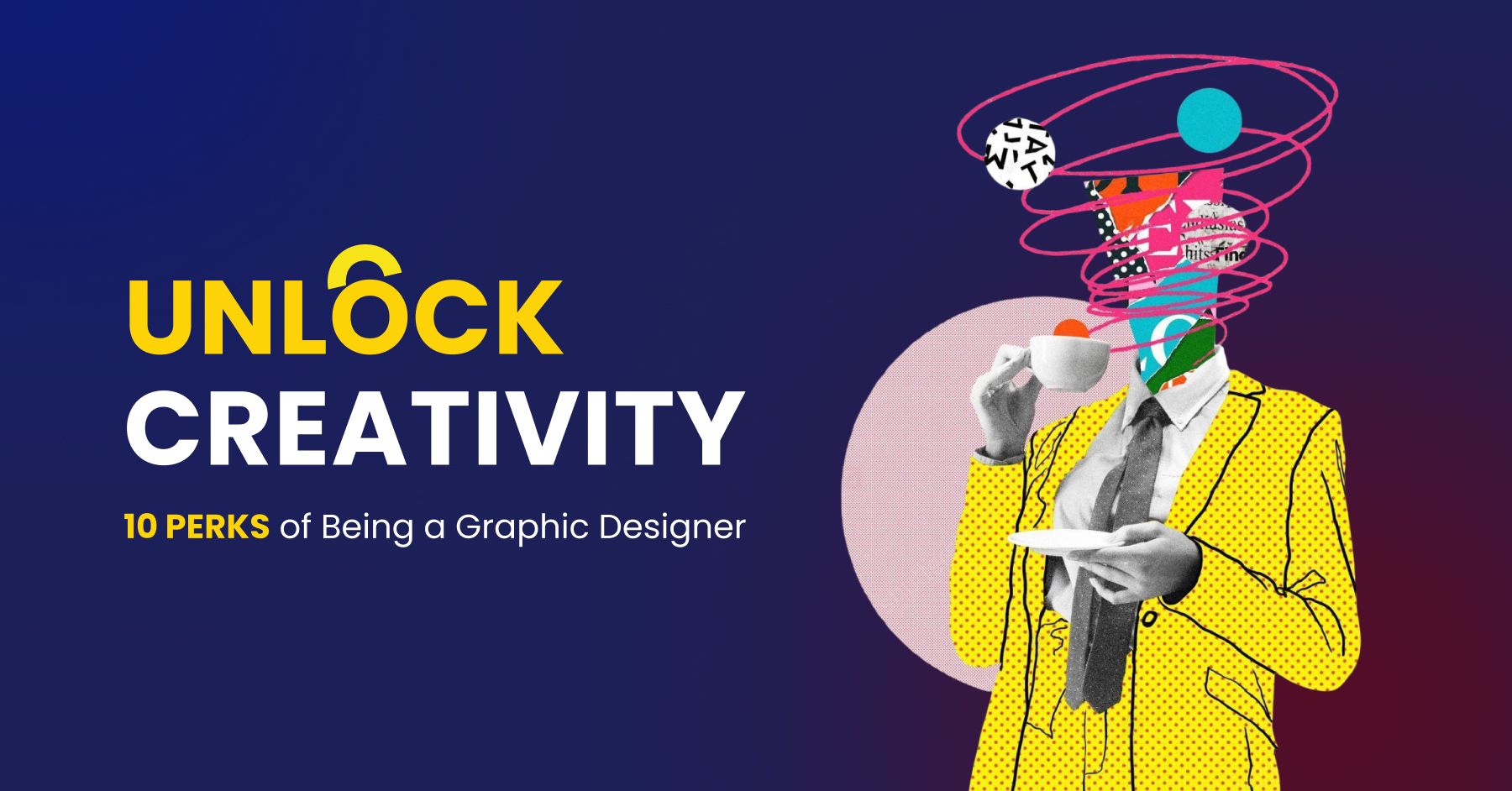The career of a graphic designer is creatively stimulating. And the opportunities are endless.
The word ‘Design’ evokes a pleasant sensation. It is linked with art and aesthetics, the very attributes that separate human being from other living creatures. This is not to say that animals are totally bereft of aesthetic tendencies. There is beauty in the way birds weave their nests or a tiger races elegantly to catch its prey or in the magnificent way peacocks dance, flaunting their display of myriad colours. However for animals, beauty and symmetry are an instinctive and intuitive aspect of their existence. As the highest creation of nature, human beings alone are blessed with nature to create and add beauty and design to every aspect of their life in a planned and intentioned manner, taking art and aesthetics to a different level altogether.
Art and aesthetics have always been a part of human existence since the earliest times. From ancient times men added visual pleasure to articles and objects of use by having them designed in specific ways. Colour, shape and symmetry have always been an expression of man’s creative urges. However, it is said that modern design started from the German art school “Bauhaus” which was established in 1919. Soon, the art of industrial designing as well as graphics designing developed and spread across Europe before becoming popular in the United States of America.
Design industry witnessed a regular annual growth between 23% and 25% in recent years and the sector needs more than 62,000 designers while the number of qualified designers are only 7000. As a result, India’s design sector has expanded its opportunities and scope.
Today, a career in design offers endless possibilities where you get to translate your passion into a profession. Let’s take a look at the various exciting career options available for a professional designer:-
- Textile Designer
- Digital Designer
- Product Designer
- Graphic Designer
- Art Director
- UI Designer
- UX Designer
- Design Managers
- Interior Designer
- Fashion Merchandiser
In this blog we are going to look into the tremendous scope and possibilities in the career of a graphic designer.
Who is a Graphic Designer?
A graphic designer is a professional who creates visual concepts, using digital tools (or traditionally by hand), to express ideas in art from that inspire, inform, please or captivate people, primarily consumers. The visual expressions could be related to print, website designing, advertising, games, magazines, or creation of brand identity.
A graphic artist illustrates concepts through balance and symmetry. His job is to understand a client’s needs designing needs to enable him to visualize and create graphics, including illustrations, layouts, photos and logos on magazines, websites, books, product packages and exhibitions. The designs that graphic designers create should catch the attention of viewers and convey the desired message. Thus graphic designers should have strong designing skills and a natural orientation towards balance and symmetry.

The use of visual components, including images, colors, forms and typography for effective and enriched communication is known as graphic design. Examples of graphic design include developing a magazine layout, making a poster for a play or designing product packaging. Graphic designing is considered a lucrative profession today as the potential for high paying jobs continues to grow in this field with the advancement of digital technology. The increase in disposal income and the growing preferences for well designed spaces are other reasons why graphic design is a much sought after career nowadays.
Graphic design abilities are utilized in almost every business as a subset of the fine arts, but they are especially common in branding, advertising, UX and UI designing. Besides, they find employment in the media industry, IT sector and even in the film and TV production houses.
In a visual-driven society, graphic design has become a powerful career that combines communication, technology, and art. Graphic design provides countless chances for development, originality, and influence, whether you’re drawing logos, building user interfaces, or producing compelling brand experiences. By fusing creativity and technology, graphic designers may create digital masterpieces from their artistic vision. Therefore, let’s explore in this blog the top benefits of being a graphic designer and why it’s a great career choice!
What Are the Benefits of Being a Graphic Designer?
The most attractive aspect of a graphic Designer job comprises three things – creative freedom, flexibility and high income. As a graphic designer you have the full freedom to give express to your creativity. You can also enjoy the flexibility to work as a fully fledged employee or as a freelancer choosing your assignments. Again you can work from office or from home depending on the circumstances. Add to that the fact that good graphic designers earn lucrative incomes.
They can choose from diverse career paths, benefitting from the opportunities to further their career growth. As a graphic designer you can follow multiple career paths. You can become a web designer/illustrator, an UX/UI Designer, a Motion Graphics designer, a Digital Illustrator or even a video illustrator. All these career positions offer ample opportunity for career growth and progress.
10 Amazing Benefits of Being a Graphic Designer
Unlimited Creative Freedom
- As stated, you will have ample scope as a graphic designer to express your creativity daily through logos, websites, branding, social media and more.
- You will get the opportunity to work with various styles, themes, and media. Remember, no two projects are the same!
- With graphic design, you will be able to tell stories visually to leave a lasting effect on viewers/consumers..
High Demand and Job Security
- There is no dearth of jobs for good graphic designers as their skills are in much demand in marketing and branding.
- Graphic designers are required across various businesses for website designing, product packaging, social media content, and advertising.
- With digital transformation booming, the need for designers is constantly growing.
Competitive Salary and Earning Potential
- Salaries for graphic designers vary based on skill, experience, and specialization. Beginners in the field can expect an annual salary between Rs 4 to 6 LPA. At the mid-level the salary could increase to Rs 8 to Rs 10 LPA and experienced graphic designers can earn handsome packages ranging Rs 12 to Rs 15 LPA.
- Freelance designers can earn even more by taking on multiple projects.
- Additional income streams can be generated from the following:-
- Selling templates and design assets
- Teaching design courses
- Creating and monetizing digital products
Work from Anywhere (Flexibility & Remote Work)
- Graphic designers can work remotely, as freelancers, or in a corporate setting.
- The industry allows for work-from-home opportunities and flexible schedules.
- Many designers become digital nomads, traveling and working on projects from different countries.
Diverse Career Paths & Specializations
As a graphic designer, you can choose from various graphic design career paths, including:
- Branding & Logo Design
- UI/UX Design
- Illustration & Animation
- Motion Graphics
- Packaging Design
- Advertising & Marketing Design
Also note, you will get opportunities to work in startups, corporations, agencies, or as a freelancer.
Opportunity to Start Your Own Business
• Graphic artists can also have the options of starting their own business, freelancing or establish their own brand.
• You can make passive money by selling branding kits, typefaces, and graphic layouts online.
• A lot of designers use their skills to provide coaching or advising.
Continuous Learning and Skill Development
- Like all tech based creative jobs, graphic design is an ever-evolving field that keeps pushing creative boundaries.
- Graphic designers have to constantly upgrade their skills in a constantly learning and updating process. Learning new tools like Adobe Creative Suite, Figma, Procreate, Blender boosts career opportunities.
- Staying updated with design trends (minimalism, 3D graphics, AR/VR) ensures long-term success.
Collaboration with Exciting Brands & Clients
- You will have the scope to work with start ups, global brands and influencers to create impactful designs.
- Creative marketing campaigns and branding initiatives benefit from the contributions of graphic designers.
- New problems, fresh ideas, and original creative solutions are presented by every project.
Ability to See Your Work Everywhere
Graphic designers create visuals that are exhibited on websites, social media platforms, product packaging, billboards, magazines & advertisements. They can derive immense job satisfaction from this fact as the scope of seeing your work in real-world applications is a highly satisfying experience.
Freedom to Experiment and Innovate
Designers have the freedom to experiment with various typeface, color schemes, and art forms; bold and creative graphic design has helped many well-known firms grow. New innovative methods and ground-breaking design trends are the results of experimentation.
Challenges of Being a Graphic Designer and How to Overcome Them
Tight Deadlines & High Expectations
One of the challenges of a graphic designer’s job is the fact that designers often face short turnaround times and last-minute revisions. The way to handle this is to always ensure proper time management, use design templates, and set realistic expectations.
Staying Competitive in the Industry
The graphic design is a fast evolving one with constantly changing trends and tools. Only a commitment to continuous learning and upgrading through courses, workshops, and design communities can help you to keep up with the rest.
Managing Client Feedback & Revisions
Clients may have unclear and often unreasonable expectations and may also request for multiple revisions. Clear communication, detailed project briefs, and setting boundaries can help address this issue.
Conclusion:
Graphic Design is not just a career; it is much more than that. It’s a passion!. A graphic designer’s work is an exhibition of how designers express themselves; each line, color, and shape they choose conveys their feelings. They express their creativity, ignite innovation, and give life to things through graphic design. What’s more, they combine the tech with creativity.
As a designer you should be ready to blend creativity and technology, creating digital masterpieces in the process and adding beauty and balance to the tech age. So are you ready to start your graphic design career? Let your creativity shine!












3 Responses
Hi mates, its fantastic piece of writing regarding teachingand completely defined, keep it up all the time.
What’s up to every , for the reason that I am actually eager of reading this blog’s post to be updated regularly.
It carries nice information.
HI thank you for share this knowledge i like your site..